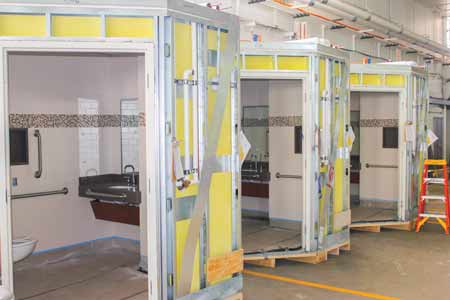 Hill Mechanical
Hill MechanicalModular Prefabricated Components Speed Construction, Cut Waste
Third part of a three-part cover story profiling Advocate Health Care's Albert Manshum.
Advocate Health Care is about to close out on around $1.5 billion of new construction and significant retrofit projects across its system. Since 2009, there has been a major investment in almost every single one of the Advocate campuses, says Albert Manshum, senior vice president of operations, integration, and optimization for Advocate Health Care.
Projects included adding a 30,000-square-foot bed tower and 300,000 square foot ambulatory center at Advocate Christ Medical Center in Oak Lawn, Ill., and building several other large ambulatory centers in cities in northern Illinois, among several other projects.
As part of his strategy to make facilities at Advocate as efficient as possible, Manshum has deployed prefabricated components and modularity as key tools in that effort. For example, all of the bathrooms in the last three new patient towers in the system have been prefabricated, right down to a roll of toilet paper already in the dispenser.
Eventually, as Advocate continues to refine its process, Manshum expects modular construction and prefabrication will yield first-cost savings over stick-built designs. However, it has yielded savings in other ways already. First, quality is improved due to the controlled prefabrication setting. It’s safer, as installing a prefabricated unit cuts down on workers climbing around on ladders at a job site. Manshum says just that aspect will yield savings, eventually. “We know they’re coming because the fewer safety incidents we have, the lower the insurance will be for our contractors, and therefore the lower our costs will be,” he says.
In addition, modular prefabricated components cut down on the number of workers who have to find parking on already busy hospital campuses. And it speeds up the construction process.
Beyond restrooms, Manshum is exploring what other facility components can be modularized and prefabricated for future projects, such as exam rooms at ambulatory sites.
Related Topics:














